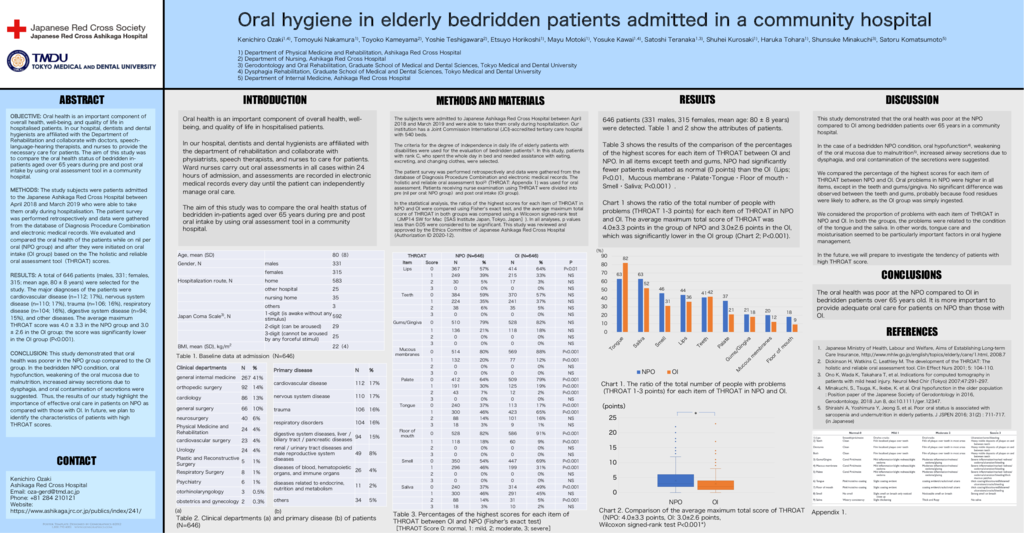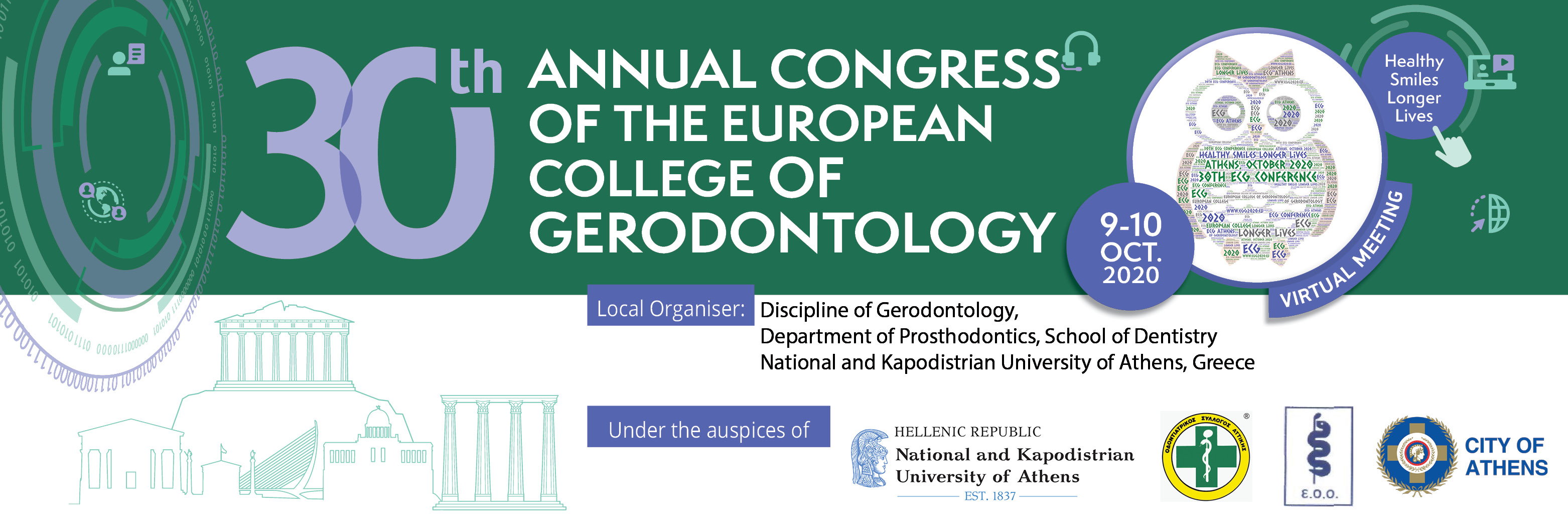OBJECTIVE: Oral health is an important component of overall health, well-being, and quality of life in hospitalised patients. In our hospital, dentists and dental hygienists are affiliated with the Department of Rehabilitation and collaborate with doctors, speech-language-hearing therapists, and nurses to provide the necessary care for patients. The aim of this study was to compare the oral health status of bedridden in-patients aged over 65 years during pre and post oral intake by using oral assessment tool in a community hospital. METHODS: The study subjects were patients admitted to the Japanese Ashikaga Red Cross Hospital between April 2018 and March 2019 who were able to take them orally during hospitalisation. The patient survey was performed retrospectively and data were gathered from the database of Diagnosis Procedure Combination and electronic medical records. We evaluated and compared the oral health of the patients while on nil per oral (NPO group) and after they were initiated on oral intake (OI group) based on the The holistic and reliable oral assessment tool(THROAT) scores. RESULTS: A total of 646 patients (males, 331; females, 315; mean age, 80 ± 8 years) were selected for the study. The major diagnoses of the patients were cardiovascular disease (n=112; 17%), nervous system disease (n=110; 17%), trauma (n=106; 16%), respiratory disease (n=104; 16%), digestive system disease (n=94; 15%), and other diseases. The average maximum THROAT score was 4.0 ± 3.3 in the NPO group and 3.0 ± 2.6 in the OI group; the score was significantly lower in the OI group (P<0.001). CONCLUSION: This study demonstrated that oral health was poorer in the NPO group compared to the OI group. In the bedridden NPO condition, oral hypofunction, weakening of the oral mucosa due to malnutrition, increased airway secretions due to dysphagia, and oral contamination of secretions were suggested. Thus, the results of our study highlight the importance of effective oral care in patients on NPO as compared with those with OI. In future, we plan to identify the characteristics of patients with high THROAT scores.
- 50 views



